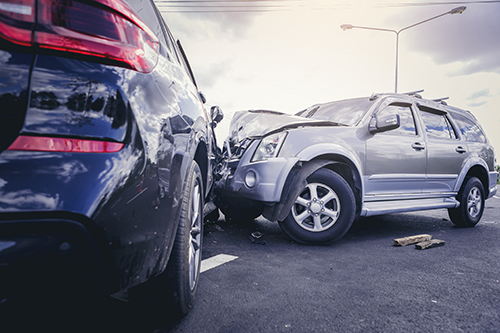Human beings are creatures of habit. We generally like to do certain things at certain times in certain ways. The insurance industry relies on this inclination toward habitual behavior to assess risk.
After all, living a safe and healthy life is not a one-and-done proposition – it requires years of following good habits. What a difference a pandemic makes. Shutdowns and social restrictions changed our everyday behaviors in a myriad of ways, from how and where we work to what and when we eat. This transformative change included our driving habits. After years of following the same driving schedule and route, people were forced to work remotely during the pandemic, and for many, driving patterns and behaviors have never been the same – both for better and for worse. And the pandemic is only one of multiple recent societal trends impacting driving. This article looks at some notable trends and how they may impact what insurers see on motor vehicle reports.
The COVID-19 Effect
What we thought was a short-term pandemic is having a long-term effect on our everyday lives, even as we recover. According to data from the National Highway Traffic Safety Administration (NHTSA), this certainly includes our driving habits. Consider these statistics from 2020:1
- Overall mileage dropped countrywide by as much as 50% in 2020, indicating that Americans drove less due to the pandemic and warnings to stay home and avoid unnecessary travel. Yet, even on emptier roads with a lower volume of drivers, data shows those remaining on the roads engaged in riskier behaviors. This included impaired driving due to alcohol, marijuana and opioids, as well as speeding and failure to wear seat belts. The result was an overall increase in driving fatalities.
- NHTSA research estimated that 38,824 people died in motor vehicle traffic accidents in 2020, an increase of approximately 7.2% compared to fatalities in 2019 and the largest number of fatalities since 2007. For males, driving deaths were up 9%.
- Traffic fatalities from 2019 to 2020 showed the following changes according to age categories:
- Ages 16 to 24 – up 15%
- Ages 25 to 34 – up 18%
- Ages 35 to 44 – up 14%
- Ages 45 to 54 – up 4%
- Ages 55 to 64 – up 5%
- Age 65 and up – down 9%
The shift in driving safety continued to evolve in 2021. In July 2021, compared to the same period in 2019, individuals were both driving more and driving differently. This included a shift away from public transportation in favor of driving their own vehicles. During the height of the pandemic, drivers reached higher speeds for longer periods of time. While instances of sustained high speeds have come down as traffic has increased, time spent at a higher rate of speed remains approximately 10% higher than pre-pandemic levels in 2019.
- According to the NHTSA, traffic fatalities increased during the first half of 2021, up 18.4% over the same months in 2020.
- Research shows incidents of speeding and not wearing a seat belt remain higher than prior to the pandemic.1
Accompanying the pandemic in 2022 are all-time high gas prices. With a higher percentage of income spent at the pump, many drivers are strategizing how to reduce fuel consumption and rethinking their normal routines and spending habits. Reducing travel, carpooling, combining errands and using public transportation are all steps to consider. How this may impact driving behavior moving forward is yet to be seen.
Aggressive Driving and Road Rage
According to NHTSA, aggressive driving occurs when “an individual commits a combination of moving traffic offenses so as to endanger other persons or property.” Aggressive driving is a factor in 54% of all fatal motor vehicle crashes, according to the AAA Foundation for Traffic Safety.1
Road rage takes things one step further into more violent and often more dangerous territory. Road rage occurs when a driver experiences extreme aggression or anger intending to create or cause physical harm. The number of road rage incidents has increased sharply in recent years. According to a June 2021 report, the average number of people shot and killed or wounded in road rage incidents in the US had almost doubled, going from a monthly average of 22 deaths and injuries in the four years prior (June 2016 to May 2020) to a monthly average of 42 deaths and injuries between June 2020 and May 2021.
- The 728 road rage incidents in 2021 broke the record of 702 incidents set in 2020.
- The total number of people killed or injured due to road rage in 2021 was 522, compared with 409 in 2020.
- This contrasts with the figures from 2016 to 2019, which never exceeded 300 incidents.2
Insufficient data at this time prevents knowing with certainty what is causing the increase in road violence; however, it is likely a combination of multiple factors, one being the COVID-19 pandemic, which has brought financial, medical, social, and other stressors into people’s lives.3
Marijuana and Driving
Marijuana use is on the rise just as penalties for possession are diminishing. The trend of decriminalizing or legalizing marijuana possession, both medically and recreationally, continues to grow nationwide:
- 11 states and the District of Columbia have legalized marijuana.
- 23 states have decriminalized marijuana possession.
- 34 states and the District of Columbia have established medical marijuana programs.4
The consequences of this public policy shift impact highway safety and the way in which we evaluate impaired driving offenses.
Surveys conducted by the NHTSA have started to test for the presence of drugs. The NHTSA’s Crash Risk study, the first large-scale US study to include drugs other than alcohol, estimates the odds of being involved in a crash if a driver is alcohol- and/or drug positive. Per the study, a positive drug result does not automatically imply impairment. Results show that not only did the percentage of drug use among the fatally injured rise, but marijuana presence doubled in 2016 compared to 2007.5
Unlike the recognized level of impairment for drunken driving, no measurable standard exists for drugged driving. Therefore, each state addresses marijuana impaired driving based on its own laws.6
States continue to explore methods to enhance regulations for driving under the influence of drugs (DUID) by collecting crash data. However, the role marijuana plays in crashes is often difficult to determine because it can be detected in body fluids for days or even weeks after use and because people often combine it with alcohol.7
As legalization increases, data correlating legalization with crash rates is being collected, and early indications suggest crash rates rise when states legalize marijuana. The most recent Insurance Institute for Highway Safety (IIHS) study conducted in 2021 demonstrates how injury and fatal crash rates in California, Colorado, Nevada, Oregon and Washington jumped in the months following a relaxation of marijuana laws in each of those states. The five states experienced a 6% increase in injury crash rates and a 4% increase in fatal crash rates, compared with other Western states where recreational marijuana use was illegal during the study period. Despite increases in crash rates, however, studies of whether marijuana itself makes drivers more likely to crash have been inconsistent.8
Trucking Today
Driving a commercial motor vehicle (CMV) requires a high level of knowledge, experience, skills and physical abilities. To obtain a commercial driver’s license (CDL), an applicant must pass both skills and knowledge testing geared to these higher standards. Additionally, CDL holders are held to a higher standard when operating any type of motor vehicle on public roads. Serious traffic violations committed by a CDL holder can affect their ability to maintain their CDL certification.9
Prior to COVID-19, commercial truck-related accidents were on the rise. Based on information from the NHTSA, in 2019 over 118,000 large trucks were involved in crashes resulting in an injury. This was a 5% jump from the previous year.1
During the pandemic, emergency declarations were enacted by the government to ensure the timely transport of vital supplies like food, medical equipment and basic consumer provisions. One of these declarations was the easing of hours of service (HOS) rules, which were originally put in place to improve working conditions for truckers and help improve safety on the roadways. Many of the rule changes continued into 2022 and may still be active today.10 As the pandemic continues to affect the transportation of goods throughout the world, the trucking industry must find ways to adapt and to keep up with consumer demands, while also ensuring the safety of drivers.
Distracted Driving
Distracted driving continues to be a major problem among drivers of all ages, and has grown with more employees working remotely during the COVID-19 pandemic. The abrupt change to a virtual environment has increased reliance on technology, which has carried over into vehicles.11 This goes beyond just texting or taking a phone call while driving; employees are now emailing and even taking Zoom calls or virtual meetings. A study found that of 86,000 COVID-19-era car crashes, 27% of all drivers were using their cell phones within 60 seconds of impact.12 A study done by Carnegie Mellon showed that just listening to your cell phone alone reduces the brain activity associated with driving by 37%.13
Attention to social media remains a major concern with teen and young adult drivers. Additional distractions for this young age group include other passengers in the vehicle and well-meaning parents calling or texting to check in. According to the Children’s Hospital of Philadelphia Research Institute, in 2019, 39% of high school students reported cell phone use while driving in the past month.14 Combined with inexperience and lack of skills, these distractions are especially concerning for this age group. Teens have a three-times higher fatal crash rate per mile driven than those over age 20.
Most states have enacted laws to reduce the number of accidents related to distracted driving. These laws and penalties vary greatly from state to state and can include handheld bans, texting bans and all cell phone use bans. For example, a texting violation in California comes with a $20 fine, while this same violation in Alaska comes with a $10,000 fine and possible jail time. Some states have made cell phone use a primary offense, enabling officers to pull people over strictly for violating a cell phone use ban.15 As of July 2021, no state has yet to ban all cell phone use for all drivers, and only 24 states prohibit hand-held phone use while driving; 48 states ban text messaging while driving.16
Cell phone apps offer useful tools to help prevent distracted driving. LifeSaver, for example, uses GPS monitoring to block the ability to use the phone while driving. Meanwhile, Text Limit prevents features on a phone from functioning when the phone is moving above a certain speed.17
The End of the Road
Amid these unprecedented and challenging times, the motor vehicle report remains an important tool for life insurers to access a comprehensive view of an individual’s driving history. Driving patterns are already hard to predict, and adding a pandemic into the mix only expands a poorly quantified gray area. From pandemic effects to increased marijuana use to distracted driving, underwriters will continue to face challenges when reviewing a driver’s history. The key is to understand the many factors involved and use those insights to take a deeper dive into applicants’ driving mortality risk. In other words, rather than just going along for the ride, underwriters need to take the wheel.
Addendum
Railroad Crossings: Still an Important Risk To Consider
The first railroad in the US, the Baltimore & Ohio, was chartered in 1827. Nearly two centuries later, railroads remain a vital part of the nation’s economy – and a very real mortality risk. For motorists, trying to beat a train through a railroad crossing can lead to often fatal consequences for the driver, passengers and innocent bystanders hurt or killed by debris after a crash.
According to the Federal Railroad Administration, 2,131 collisions occurred at public and private crossings in 2021, resulting in 237 fatalities and 653 injuries. The number of collisions is up from 1,906 in 2020; however, this increase may be attributable to stay-at-home measures adopted in 2020 in response to the pandemic. The number of collisions in 2021 was in line with pre-pandemic levels, dating back to approximately 2017.18
To limit and lower the number of railway violations and ultimately the number of collisions, regulations are strictly enforced. Rail police officers, while employed by the rail carrier, are commissioned as police officers under the laws of a state.19 They employ both automated systems and cameras to capture images of vehicles and license plates, which note the time and place in which any incident took place. Holders of a commercial driver’s license (CDL) are held to a higher standard for railway violations because they pose a greater risk for serious injury or death based on the size and weight of their equipment and the type of cargo.20 Nearly 200 years after their introduction, railroads remain an important risk consideration, and insurers should pay close attention to railroad violations on motor vehicle reports.





